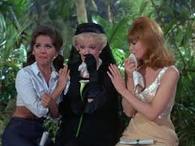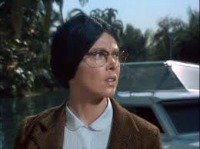Ken Levine has had an amazing career as a TV writer. (“M*A*S*H” and “Cheers” are just two of the highlights on his resume.) He now writes a blog that is just as entertaining as his TV work has been.
Levine is a stickler for character plausibility. He recently wrote a blog about everybody’s favorite TV punching bag, “Gilligan’s Island,” a series that was anti-plausibility the way Tony Soprano was an anti-hero.
Levine and his daughter Annie (also a TV writer) brought up the major sore spots that everyone has been addressing for — can it have been this long? — a half-century. Why did the Howells bring so much luggage along for a three-hour tour? How come the Professor could make elaborate contraptions but not fix a hole in the wrecked boat? And so on down the line.
Before I go any further, my personal history. I grew up just outside of a small town in Illinois. Every afternoon, the school bus dropped me off outside my home at precisely 3:30, at which time I would rush inside to catch the local TV station’s umpteenth rerun of “Gilligan’s Island.” Don’t ever tell me that kids don’t enjoy repetition in storytelling. By the time I was 10, I could have transcribed every episode of that series from memory.
Like everyone who cleaves to some part of his or her childhood, I continued to enjoy “Gilligan’s Island” as a guilty pleasure throughout my twenties and thirties. When my daughter was young, she and her cousin would watch reruns of the show. My daughter was constantly amazed that when I was walking through the room, I could stop, stare at the TV for a couple of seconds, and say, “Beauty contest,” or whatever plotline that episode happened to be about.
I have finally come out at the other side of the wormhole and have figured out the series’ major dilemma. It’s not so much that the show is relentlessly moronic (though it is certainly that). The main problem is that the show tries to have things both ways. At times, it wants to be nothing more than a slapstick comedy. Then, for reasons unknown, at other times it wants to be taken seriously and truly tug at your heartstrings.
The show would have been much better off if it had gone completely in one direction or the other. If it had gone for the full silly, it would probably have been regarded as a comedy classic along the lines of “Monty Python’s Flying Circus” or “Police Squad!” If it had truly been about some people stranded on a desert island whom we were supposed to care about, it could have ended up like “Lost” — which, for my money, was “Gilligan’s Island” with a lot more pretentiousness but is certainly regarded as a TV cult classic by many.
But no. A “Gilligan” episode would get you all worked up about a potential rescue for 20 minutes. Then Gilligan would gum up the works in the last five minutes, which meant that we were supposed to laugh the whole thing off. Wha-??
The worst results came when the show did its version of all-out seriousness (which happened more often than its fans care to admit). In one episode, a plain-Jane woman named Eva Grubb (played by Tina Louise, in addition to her regular role as sexpot Ginger Grant) navigates a boat to the island. Eva has been spurned by all men and wishes to rid herself of all civilization for good.
The episode plays this angle mostly for pathos. Near the end, for reasons upon which I won’t elaborate (because I know you don’t really care), Eva ties up Ginger and intends to ride her boat back with the others to civilization disguised as Ginger. Luckily, Ginger breaks free in time and angrily spills the beans to the entire group. Eva sputters an extremely lame apology and asks Ginger’s forgiveness, which Ginger magnanimously extends to Eva.
Nice ending, right? Hold on, little buddy. The next morning, the castaways find that Eva has left the island, leaving behind only a note. The note reads that, since Eva briefly fooled the castaways when she was disguised as Ginger, she now intends to fool the entire world by “resuming” Ginger’s Hollywood career. The note is signed, “The New Ginger Grant.”
And that’s where the episode leaves us — with Ginger in tears and a psychological wreck, and the castaways yet again still stranded on the island. To a kid, this was nearly as devastating as finding out that Col. Henry Blake’s return to America was interrupted by an unscheduled swan-dive into the Sea of Japan on the season finale of “M*A*S*H.”
And what’s worse, the series doesn’t even have the nerve to deal with this issue again. The next episode is business as usual, as though Ginger hadn’t had her life’s rug pulled out from under her. When series creator Sherwood Schwartz did the reunion TV-movie “Rescue from Gilligan’s Island” in 1978, he was obviously hoping that the show’s fans had terrible memories. Once the castaways got back to civilization, Ginger resumed her career in Hollywood as though Eva Grubb (and more than a decade squirreled away on an island!) had never happened.
I now look back and realize that many TV producers made millions of dollars from the viewership of naive kids like me. And while I don’t begrudge anybody an honest living, I think I’d have been ashamed to make any millions the way some of them did: Hanna-Barbera with their cheapo cartoons, Sid and Marty Krofft with their garish shows…and Sherwood Schwartz with “Gilligan’s Island.”








